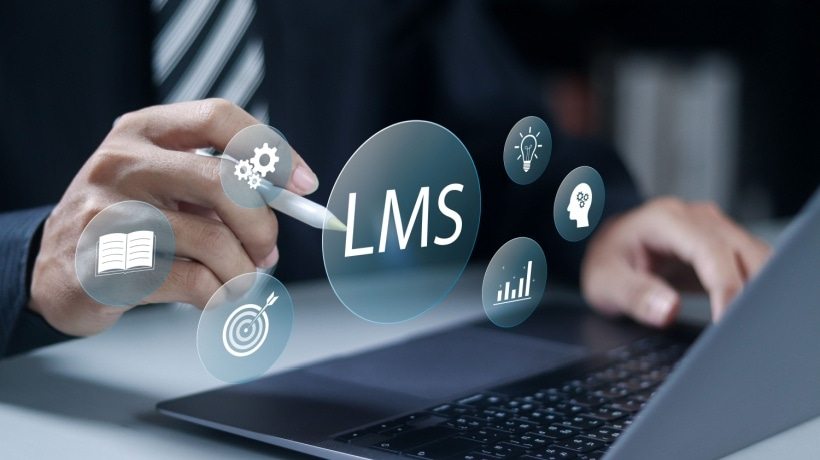What Does LMS Stand For In Education?
In today's digital age, education is rapidly evolving, and technology plays a central role in this transformation. A Learning Management System (LMS) is one of the most significant tools driving this change. Far more than a buzzword, an LMS provides a centralized platform for delivering, managing, and tracking educational content.
LMS platforms facilitate communication, support both online and blended learning, and offer flexibility for diverse student needs. They also allow educators to personalize learning paths, deliver real-time feedback, and monitor student progress. By automating tasks such as grading and attendance tracking, an LMS reduces administrative burdens and enables a more efficient teaching and learning process.
Understanding An LMS: Definition And Core Concepts
At its core, an LMS is software that organizes and delivers courses and training programs. It serves as a hub where teachers and students access materials such as lessons, assignments, and assessments. Key components typically include:
- Course management
Structuring and delivering content - User management
Handling roles, permissions, and accounts - Content management
Supporting text, video, audio, and interactive formats - Assessment tools
Quizzes, tests, and automated grading - Communication Tools
Forums, chat, and messaging systems
Modern LMS platforms also provide analytics to track performance and integrate learning with other educational technologies, creating a connected ecosystem of virtual classrooms, digital libraries, and assessment systems.
The Evolution Of LMSs In Education
Early LMS platforms were mainly repositories for static course materials. Over time, they have evolved with key milestones such as:
- Early 2000s
Basic content delivery - Late 2000s
Introduction of interactive tools and multimedia - 2010s
Cloud-based solutions and mobile-friendly designs - Present
AI-driven personalization and adaptive learning
Today's LMS platforms emphasize interactivity, accessibility, and scalability, making them integral to digital learning environments worldwide.
Key Features Of Modern LMS Platforms
Modern LMS platforms are designed to meet varied educational needs. Common features include:
- Centralized course management.
- Flexible content delivery across multiple formats.
- Automated assessments with instant feedback.
- Communication and collaboration tools.
- Analytics for tracking participation and outcomes.
- Mobile compatibility for on-the-go access.
These features support both synchronous (real-time) and asynchronous (self-paced) learning, ensuring inclusivity for different learning preferences.
Types Of LMSs In Education
Different types of LMSs address diverse institutional needs:
- Cloud-based LMS
Scalable and accessible from anywhere - Open-source LMS
Customizable but requiring technical expertise - Self-hosted LMS
Locally managed with more control over data - Commercial LMS
Subscription-based with vendor support and regular updates
Institutions typically select a system based on budget, technical resources, and specific educational requirements.
Learning Integration With Educational Technology
LMS platforms integrate seamlessly with other digital tools, enhancing the overall learning experience. Examples include:
- Virtual classrooms for real-time interaction.
- Digital libraries for resource access.
- Assessment tools for varied evaluation methods.
- Student information systems for streamlined data management.
This integration creates a cohesive ecosystem where learning is more interactive and data-driven.
Benefits Of Using An LMS In Education
The advantages of LMS adoption extend to both educators and students:
- Flexibility
Supports self-paced and real-time learning - Efficiency
Reduces reliance on physical resources and automates tasks - Engagement
Interactive tools promote collaboration and participation - Accessibility
Mobile access supports anytime, anywhere learning - Data Insights
Analytics guide teaching strategies and highlight learning gaps - Security
Robust protocols safeguard sensitive academic data
Overall, LMS platforms empower educators to focus on teaching while improving the quality of learning outcomes.
Enhancing Student Engagement And Personalized Learning
LMS tools such as discussion boards, quizzes, and simulations foster active participation. By tracking progress, these systems adapt learning paths to individual needs, ensuring inclusivity for diverse learning styles. Personalized learning improves motivation and outcomes, while peer collaboration features build community within digital classrooms.
LMS For Educators: Streamlining Administration
For educators, an LMS simplifies course organization, grading, and attendance tracking. Communication tools make it easier to share updates and connect with students and parents. By automating administrative tasks, educators can focus more on instruction and student engagement.
Popular Features Of LMSs And Educational Platforms
Several features are offered by Learning Management Systems and other education platforms. AI-powered education platforms can combine LMS and ERP functions, offering integrated academic and administrative tools for institutions. Open-source LMSs can have high customizability and offer community support. User-friendly interfaces, with strong integration capabilities and good support for various pedagogical tools, are possible.
Robust features with extensive tools for assessments, collaboration, and analytics, are available. Simple, accessible systems that integrate well with the Google Workspace ecosystem and are ideal for K–12 environments exist. LMS features can be combined with social and collaborative tools. Strong adaptive learning capabilities and support for mobile learners is available. Each platform brings unique advantages, and institutions should evaluate options based on scalability, budget, and specific learning objectives.
Implementation Strategies And Challenges
Successful LMS implementation requires:
- Assessing institutional needs.
- Involving key stakeholders.
- Providing thorough training.
- Regular evaluation and feedback collection.
Challenges include ensuring data security, maintaining privacy compliance, and delivering accessible learning experiences for all students.
The Future Of LMSs In Education
Emerging innovations will continue to shape LMS platforms:
- AI-driven personalization for tailored learning experiences
- Virtual and Augmented Reality for immersive simulations
- Enhanced mobile-first design for flexible access
These trends point to a future where LMS platforms provide increasingly sophisticated, inclusive, and engaging learning opportunities.
Learning Management Systems have redefined modern education. By streamlining administration, enabling personalized learning, and fostering engagement, they serve as a cornerstone of educational technology. With continued innovation, LMS platforms will remain central to shaping flexible, data-driven, and accessible learning environments worldwide.









